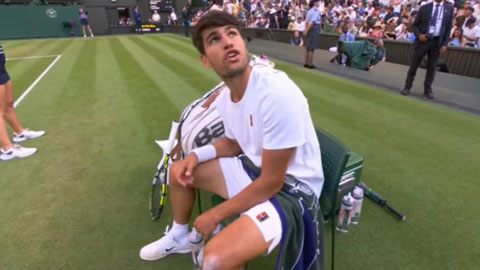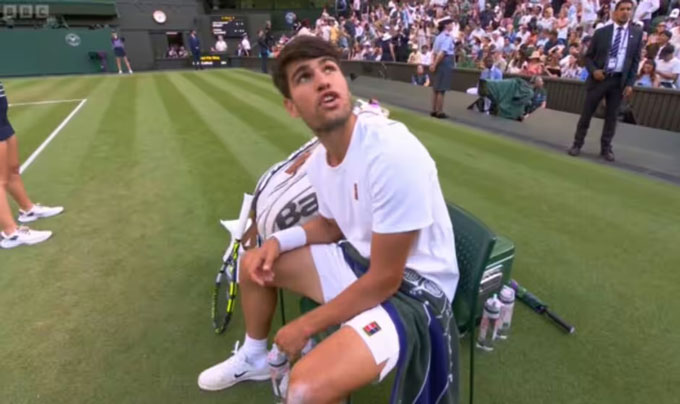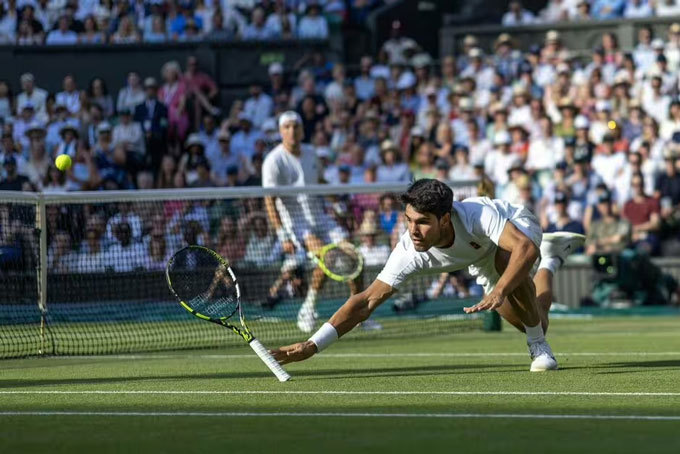The world 3rd player Carlos Alcaraz did not keep calm in the third round at Wimbledon 2025 against Jan-Lennard Struff, when he constantly questioned the accuracy of the Hawk-Eye system-the technology to replace the traditional arbitration this year.
Wimbledon 2025 marked the first Grand Slam tournament on this pitch to completely apply the “Live Line-Calling” technology, which means calling the ball automatically via Hawk-Eye instead of the referee. However, this decision is facing a wave of protest from many players, in which Alcaraz is the latest name.
In the fourth set of the match, after a controversial situation, Alcaraz showed dissatisfaction with the referee while changing the pitch: “I'm not sure about this system. I should have asked for challenges.
The ball that made Alcaraz angry seemed to have left a streak of white chalk rising after the ball touched the end of the yard – a sign that was often considered a “shadow” in the pitch. However, Hawk-Eye confirmed the ball out. BBC's commentator Henman also agreed with Alcaraz's doubt: “The rotation shows that the ball seems to touch the edge of the yard.”
Not only Alcaraz, many other players also asked the accuracy of Hawk-Eye. The No. 1 player of England Jack Draper also shared: “I don't think this system is 100%accurate. There are a few phases, the system shows a mark on the pitch, but it is clear that there is no chalk at all. The system cannot be perfect – just a few millimeters are controversial enough.”
However, the Wimbledon Organizing Committee is still determined to protect the decision to use technology. The Jamie Baker tournament director said: “The automatic calling technology has been a mandatory standard throughout ATP Tour. Two other Grand Slam tournaments have also applied 4–5 years ago. The accuracy, reliability and professionalism of the current system are at the highest level ever.”
However, the fact that a series of famous players complained shows that Wimbledon may be facing a crisis of technology confidence, especially when “emotional” situations such as chalk, reaction of the ball … are still the key element on the traditional grass pitch.



